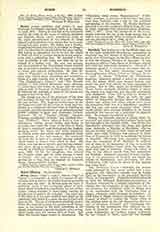

Burse (bursa, “hide”, “skin”; whence “bag” or “purse”), a receptacle in which, for reasons of convenience and reverence, the folded corporal is carried to and from the altar. In Roman form the burse is ordinarily made of two juxtaposed pieces of card-board about twenty-five centimetres (or ten inches) square, bound together at three edges, leaving the fourth open to receive the corporal. One outer side of the burse is of the same material and color as the vestments with which it is used; the rest is lined with linen or silk. The use of the burse is relatively recent. When the corporal reached its present small dimensions, it was carried to the altar, sometimes in the missal, sometimes in a special receptacle, a box or bag, which finally took the present form of burse. Just when this custom began cannot be determined. The “Chronicon vetus rerum Moguntinarum” (1140-1251) mentions a precious corporal-case; this may have been, however, only a box for the continual safe-keeping of the corporal. St. Charles Borromeo describes a sacculus corporalis distinct from the case in which corporals were preserved (Acts Mediolan., 1683, I, 524). From the fourteenth to the seventeenth centuries the use of the burse spread, and in 1692 it was universally illicit to celebrate Mass without one (Decreta S. R. C., 1866, ad 2m).
JOHN B. PETERSON

